I couldn’t stop smiling one day in late 2005 as I was led through the darkened basement of Bethesda Softworks toward the little corner unit that was to be my cube. My geek barometer was pinging off the charts. I could scarcely believe that I was there.
The place looked like a laser-tag facility; the ceilings were high and black, the walls grey with accents of Zenimax Red. We strode past the programmers, the fishbowl meeting rooms, the designers and world artists, until we reached the final row: Character Art. There, in the far reaches of the office, was a cubicle bearing the name “Jonah Lobe.” I sat down, giddy and a bit stunned, and began day one of what would become a seven-year career at Bethesda.
But this story isn’t about that career. It’s about the man in the cube behind me, a man named Adam Adamowicz.
Although he worked in the farthest, darkest corner of Bethesda Softworks, Adam’s influence stretched across the length and breadth of the studio. What Adam taught me and so many others at Bethesda – about creativity and work ethic – has stayed with us ever since.
I’ve wanted to share my memories of Adam with you, the developers and players in the gaming world alike, for many years. With Fallout 4 around the corner, I think now is the time.
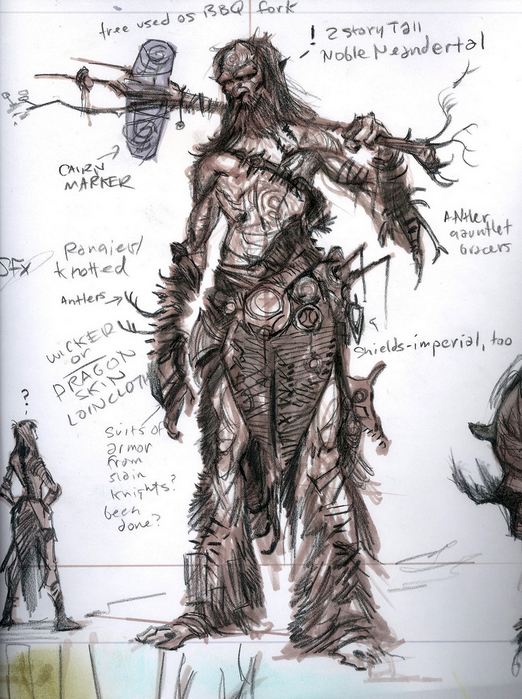
Adam Adamowicz was a concept artist. When I first started, he was the only concept artist at Bethesda, a company that builds landscapes and nations alike. His cube was small, and it felt even smaller because of the relatively large man who worked within it. The walls were tacked with ever-growing layers of sketches and illustrations.
In this temple to computer art, I couldn’t believe that Adam worked in traditional media. He used pencils, pens, markers, coloured pencils and paint. What impressed me more than anything was the abundance of creativity on those walls.
Adam’s ideas, wrought fast and bold, practically burst off the paper. He was a living treasure trove of inspiration. He conjured people, beasts, landscapes, outfits and weapons. His creations were often complemented by fascinating and funny margin notes, like “apocalypse sandals,” or “vomits entrails for external digestion” or “‘It’s just a space helmet, Jimmy!’”
Adam Adamowicz was a strange and colourful man. Physically, he was unexceptional — tall and strong-looking, handsome, with broad shoulders, pale blue eyes and a receding blond hairline. He stuck to faded T-shirts and jeans, eschewing branding or fashion statements of any kind. And yet, despite this mild appearance, he was crazy. Not really crazy, of course, but his eyes sparkled with demented humour, and the things that came out of his mouth were an unpredictable, mad-lib mix-up of the colourful and morbid. “That Mole-Rat wants to hollow out your body and use it for a toboggan,” he’d say, or “He’s like a voodoo mix of Boris Karloff and disco crabmonculus.” How do you respond to that?
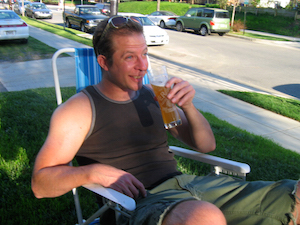
In 2006, while the rest of us were finishing up with the 2007 Oblivion expansion Shivering Isles, Adam began work on Fallout 3, and what followed was one of the most expansive and incredible brain-dumps of concept art I’ve ever seen. I was a character artist. My job was to extrapolate 2D drawings into 3D video game characters. I specialised in monsters. For any given monster, Adam supplied me with between three and 30 drawings, ranging from gestural pen work to detailed, full-colour illustrations. From this wealth of material, I created monsters like the Deathclaws, Feral Ghouls, Radscorpions, and Mirelurks that were more novel and inspired than I could have possibly conceived on my own.
As I worked to translate Adam’s concepts into three-dimensional models, I showed him my works-in-progress. I wanted his artistic feedback, of course, but mostly, I wanted his approval. His responses surprised me. He was always positive and brimming with nice things to say, and yet I wasn’t always certain he loved what I had done. That bothered me at first, but as the years went by, I came to understand that it was not so much the faithful reproduction of his work that moved Adam, but my riffing on his idea. If he could see that his work inspired me, Adam was happy.
To Adam, concept art was not so much about aesthetics, but ideas. He treated his art like a series of drills. He put as much source material into his brain as he could, and then output as many concepts as possible. His goal was never to create a body of polished art. His products were always rough-hewn and raw. He mixed-and-matched ideas at an astonishing rate and never concerned himself with what might be considered acceptable. Who else would think to strap a model Enola Gay aeroplane to the top of a mini-nuke, or slap a cheese-grater to a Supermutant’s helmet? Adam didn’t care. Adam was fearless. Over the years, he created 10 times the number of concepts that we could ever use. He worked and he worked and he worked. And for what?
Oh, nothing much. Just that little thing called Fallout 3.
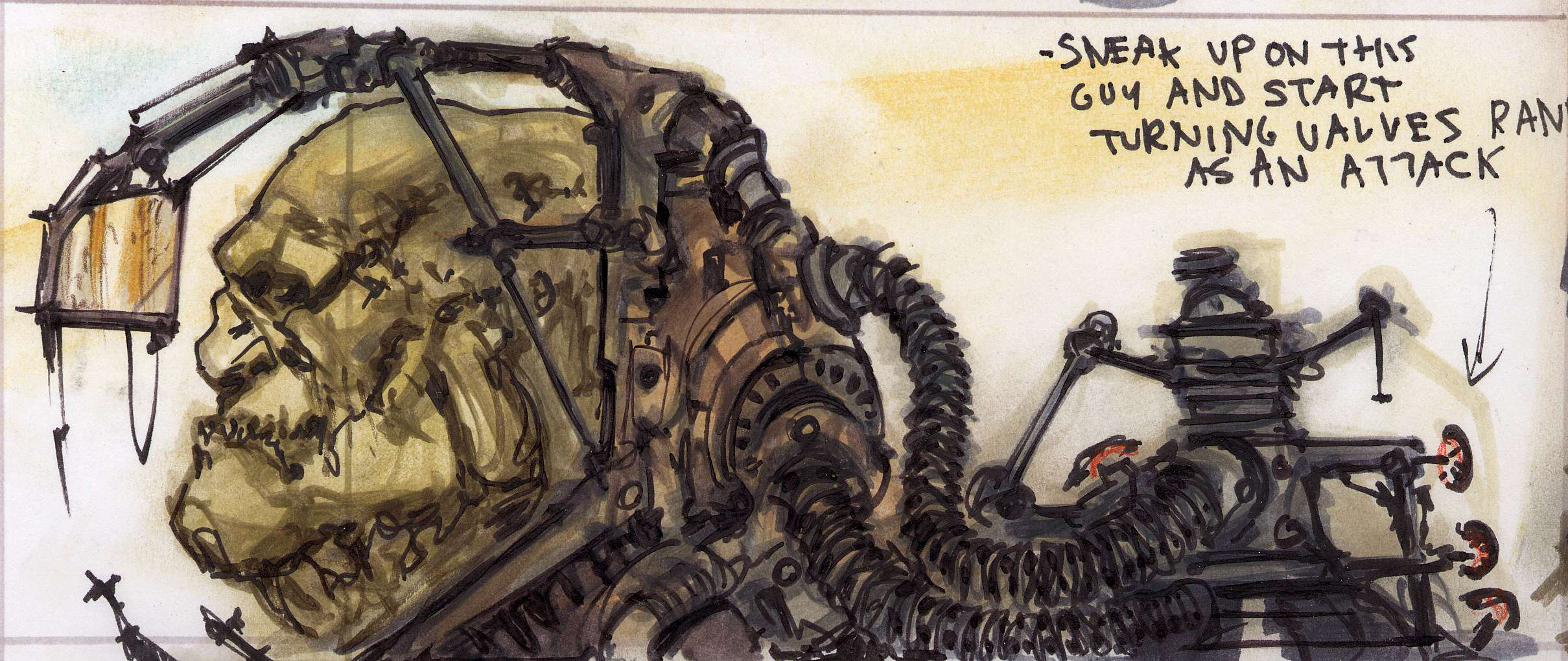
And then, a few years later, Skyrim.
Because my job at Bethesda was my first in the industry, it took me a while to understand that Adam was one of the best. His work provided us with the visual backbone for these unstoppable blockbusters. But if their critical and commercial success affected him at all, he never let it show. Adam was grateful for his job at the “monster factory.” He doodled through team meetings and yelled out “beer tickets!” on paycheck days. He was humble and he was gracious. He never complained, he never acted entitled, and he never took rejection personally.
And the most important lesson? Adam considered himself a student, through and through; always learning, always improving. His cube was filled with books: huge tomes of anatomy, ’50s technology, architecture, and style. His appetite was voracious. He absorbed everything, and what he absorbed filtered through the quirky labyrinth of his mind to spill out — garbled and rearranged — onto the page.
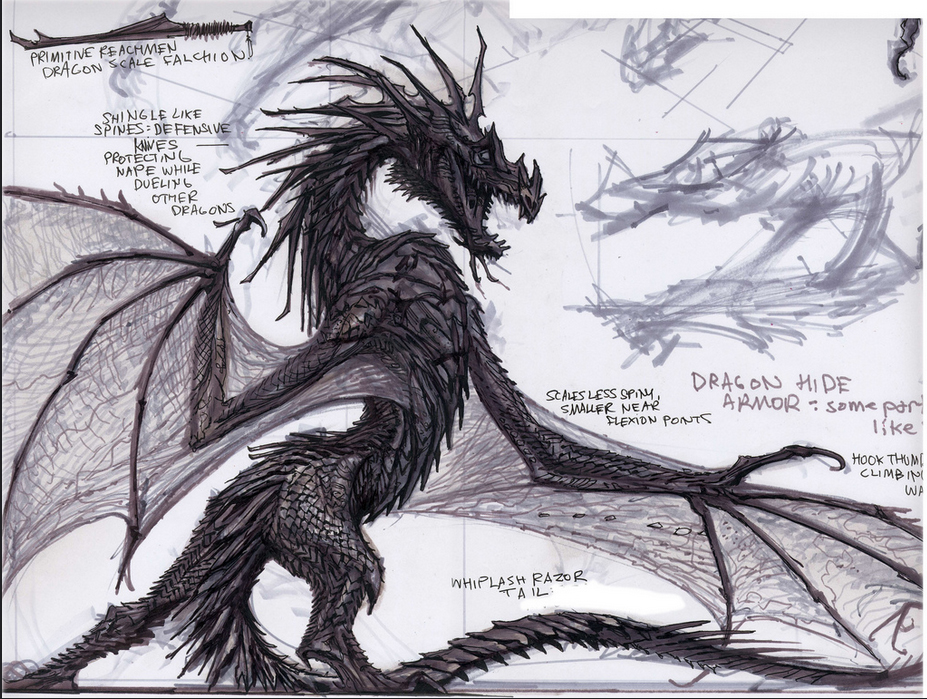
How did he do it?
I asked Adam once about his routine, and he described to me a surprisingly regular and disciplined way of life. In the mornings, on the bus to work, he sketched his fellow passengers, sights he passed, and any number of crazy ideas that came into his head. Once at work, he’d refill his coffee mug (his relationship to coffee bordered on religious), sit at his desk and get straight into it. Despite being one of the most popular guys at Bethesda, he ate lunch at his desk on most days, eager to get back to work. He worked all day, powered by banter and coffee, and then, on the bus ride home, he’d draw some more. Afterwards, he’d visit the gym (exercise was important to him), make himself dinner, pop open a bottle of wine and absorb himself in more personal art projects, painting and sculpting.
“Have no fear of perfection,” said Dali, “You’ll never reach it.” Adam took that lesson to heart. He had no fear of the blank page; he did not fear failure. He wanted to learn. He wanted to grow. Unbelievably, over the course of his time at Bethesda, he got better and better.
And then, one day in the fall of 2011, a few years after the development team had moved up to the sun-drenched upper levels of the building, I passed Adam in the hall outside of the art pit. We stopped to chat, as we often did, and when I asked how things were going, he complained that his shoulder hurt. Negativity was unusual for him, but as I watched him grimace and rotate his arm, it never occurred to me that I should be worried. Adam was a big guy, after all, forty-three years old and active. What was a sore shoulder to a guy like that?
A few weeks later, however, Adam left work for health reasons. Weeks went by, then months. I kept popping in to the art pit, anxious to see him again, to welcome him back. But the lights around his desk stayed off, his chair remained empty, and the little rubber-toy nun on his wall — “Squeeze nun for service” — stared back at me, silent and unsqueezed. The word I kept hearing around the office was “cancer.”
A few months later, he was dead.
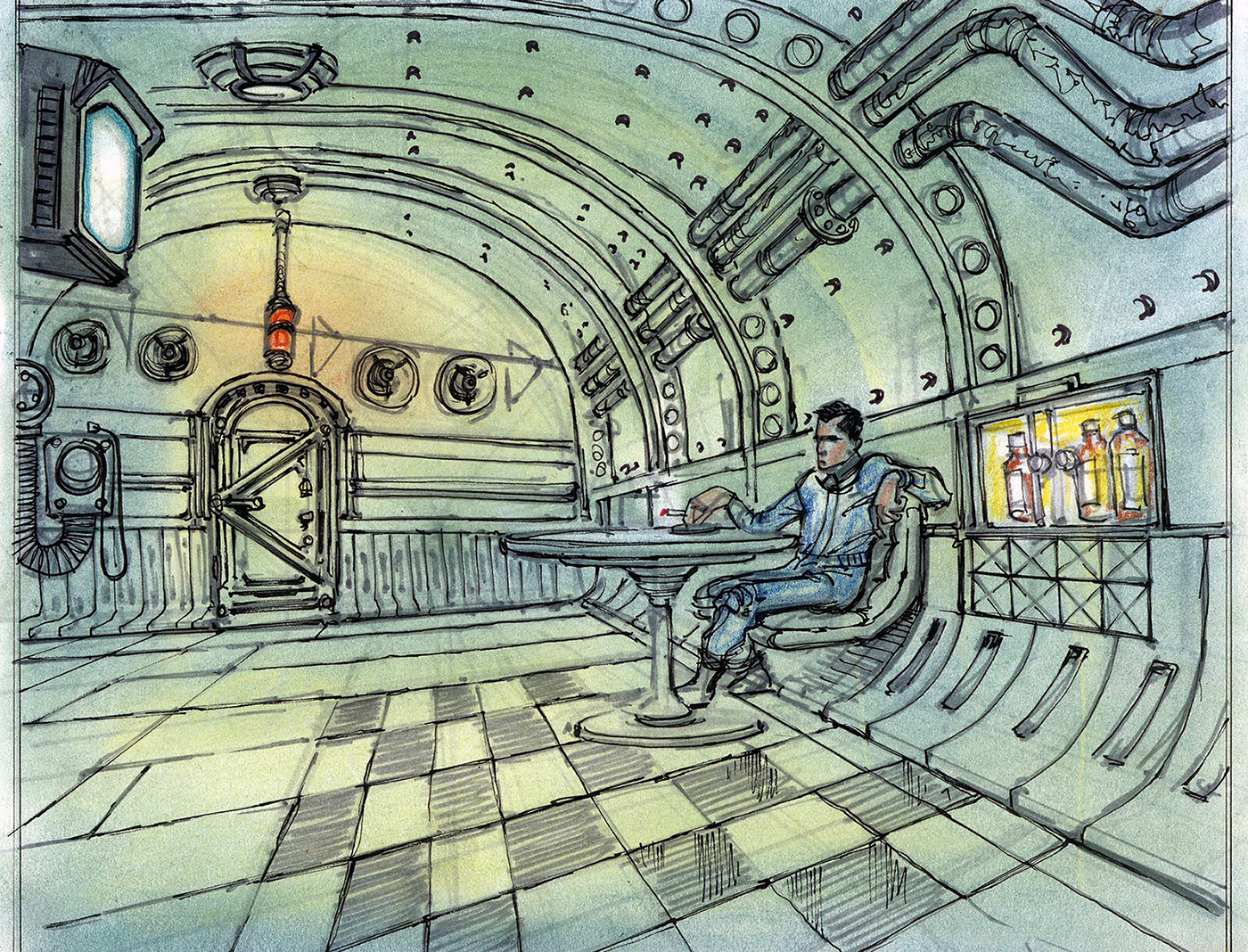
We didn’t touch his desk. I’m not sure if there was even a discussion about it (though I suspect our head of game development, Todd Howard, had something to do with it). We just left it alone, like a holy place, somewhere to worship at the feet of creativity.
Time stretched by, and his room remained wallpapered with his art; incredible as always, bursting with colour and inspiration — except now, nothing was changed or added. The lights stayed off. The only difference was that his fish tank of plant-growth had become a choked mess, one which no one bothered to clean up, since it was agreed that this was probably what he would have wanted anyway.
I left Bethesda in the fall of 2012.
By then, Skyrim had shot to the top of the charts, and Fallout 4 was on its way. Professionally, I felt like the boy at the fair who’d just won the giant stuffed panda, and I wanted to leave on a high note. My soon-to-be-wife was in her third year of law school in New York City. I wanted to be with her, and I had dreams of becoming an author. I wanted to grow in ways I’d never known before, to immerse myself in the act of creation, and to build a world, by myself, from scratch.
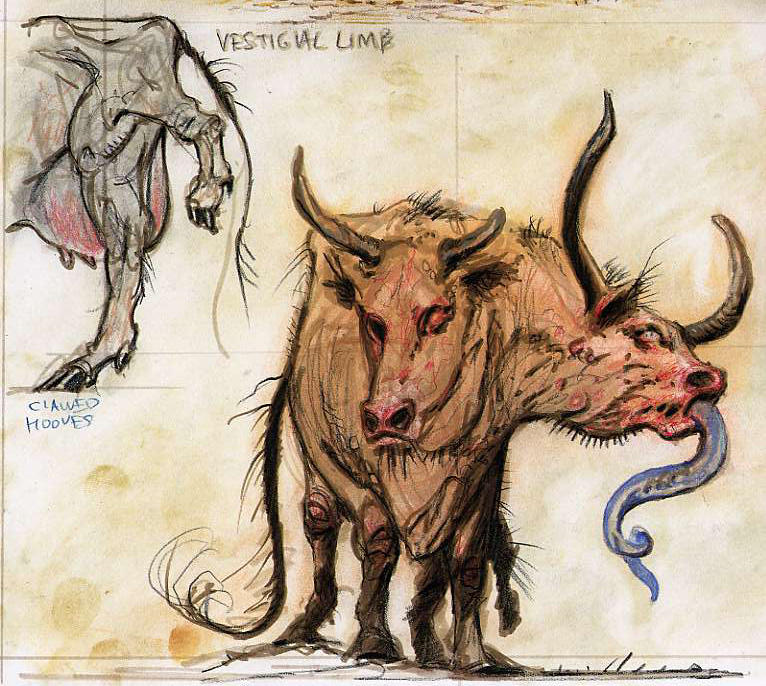
So what does that mean, exactly, to be creative?
It’s been three years now since I left Bethesda, and I’ve had a lot of time to reflect on that question. Creativity is such an elusive trait, one difficult to foster. How does one reach into one’s mind — limited, as it is, by finite experience and memory — and bring forth anything original? Adam did that all the time. What was it that made him different?
Steve Jobs once said that “creativity is just connecting things.” While I doubt Adam was a fan of Apple — I’m not even certain he owned a cell-phone — I can’t help but think that this is an apt description of what Adam did. Flipping through his work, I was always struck by the bubbling confluence of subjects, a fearless fusion of influences. He developed his artwork using a range of tools: pens, markers, coloured pastels. His creations were a collection of distinct and disparate ideas. When designing an original gun, for instance, Adam didn’t focus his research on the study of other guns, but on tesla coils, industrial power tools, or lab equipment. When designing outfits, Adam employed chew toys and oven mitts, radios and asbestos padding. The results were messy, ridiculous, and utterly original.
Adam’s creative process went beyond mere design. It was Adam who taught me that characters were more affecting with unexpected nuance: the horrifying is more horrible when infused with comedy; the disgusting all the more stomach-churning when mixed with beauty. The Draugr were not simple mummies, but noble warriors rendered in beef jerky. The feral ghouls were both repellant and pitiful. The Deathclaws were cheetahs, long and lean and starving. And Fallout 4‘s Supermutants are not lantern-jawed hulks, but long-bodied infant-men with muscles that sag like taffy. Understanding this confluence of appearance and emotion helped me realise designs more original than anything I could have otherwise produced on my own. I have learned that it’s because of these unexpected details that we remember these creatures.
Fallout 4 is around the corner.
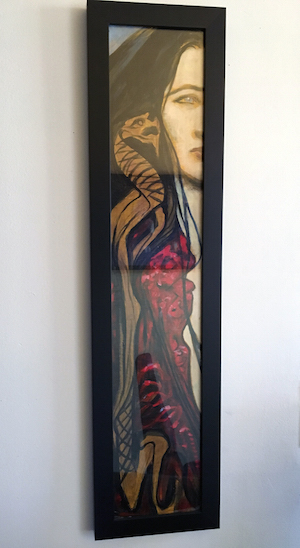
The last Bethesda game I played on which I hadn’t already worked long months was Morrowind. I’ve got monsters in this game — the Supermutants, for instance, and, of course, the Deathclaw — but the product will in every other way be new to me. My former teammates who have been working themselves to the bone for years on this game are very, very excited. Fallout 4 is a labour of love. And even after death, Adam’s fingerprints are all over it. He authored hundreds of original concepts for this newest game. He labored, as relentlessly as ever — for the game, for the team, and for you. He worked on it from his hospital bed. He worked until the end.
I have a painting of Adam’s in my office, one his mother sent me after he passed. A woman’s face; her skin like ivory, her hair raven-black. She carries a staff of gold, one that bears an eerie resemblance to the Dragon Priest staffs, and she is draped in a cloak of crimson flowers. Adam painted her on a sheet of cardboard, which a friend and I transported to the loading dock and sprayed with so much sealant that it’s become some sort of toxic polymer alloy. I look at it often.
When someone dies, they leave pieces of themselves behind. What we choose to do with those pieces becomes, in part, their legacy. I intend to honour Adam’s legacy.
So I exercise. I write for four hours every day. Afterwards, I draw, or paint, or model, or maybe I write some more. We eat dinner late in our house. I sleep, and tomorrow, I’ll do it again. I try not to fear the blank page. I try to endure the failures. I will learn, and I will grow, because I am a student, and I will always be a student.
My book is almost done. I’ll be searching for publishers soon, and I’m steeling myself for the inevitable rejections. It’s a grind, by turns demoralising and exhilarating. When I’m tired, I take a break. I stand, and I stretch, and I stare at the painting of the ivory-faced woman. Her hair hangs in loose black tendrils, and her pale blue eyes are focused just above me and to the right, at some point I cannot see. If I turn and follow her gaze, I would see a digital print of my own work tacked to the wall just behind. I look for a moment, then scan the others beside it. They look drab. And yet, I can see that they’re better than I could have done a few years ago.
So I eat lunch at my desk, and then I get back to work.
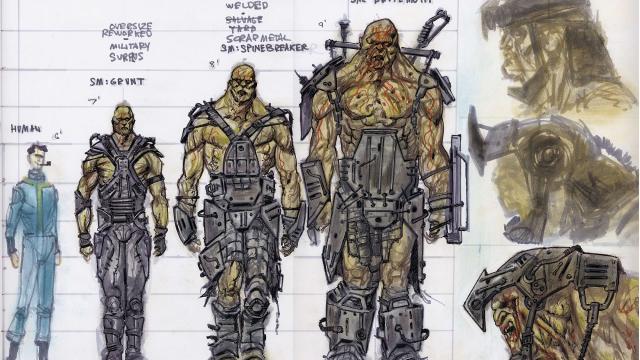
Comments
9 responses to “The Life And Creativity Of A Great Bethesda Artist”
One of the best, heartfelt articles iv read on Kotaku, well done.
RIP Adam and thank you for you contributions to some of my favourite games of all time. I’m currently going through a serious illness as well and only now do I realise how fragile life really is so enjoy it people!
Thanks for that great article, was a very interesting read!
What an amazing read
Thanks for the good read Jonah. RIP Adam.
Great article, Jonah, I was in tears by the end. RIP Adam, I’ll be thinking of you while I play Fallout 4!
tribute page
http://adam.bethsoft.com/
i wasnt prepared for all the feels this morning! I have a massive love for Bethesda, knowing how much of what i love character wise came from a brilliant human makes it all that much more special. Thank you for sharing Jonah, i cant wait to see what the team has in store for me tonight when i first boot the game, and the subsequent sleepless nights for the foreseeable future.
This is hands down the best piece I’ve ever read here.
Thank you Jonah. And thanks Adam for sharing.